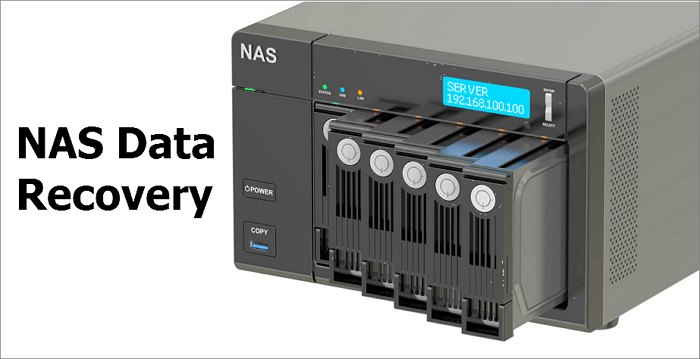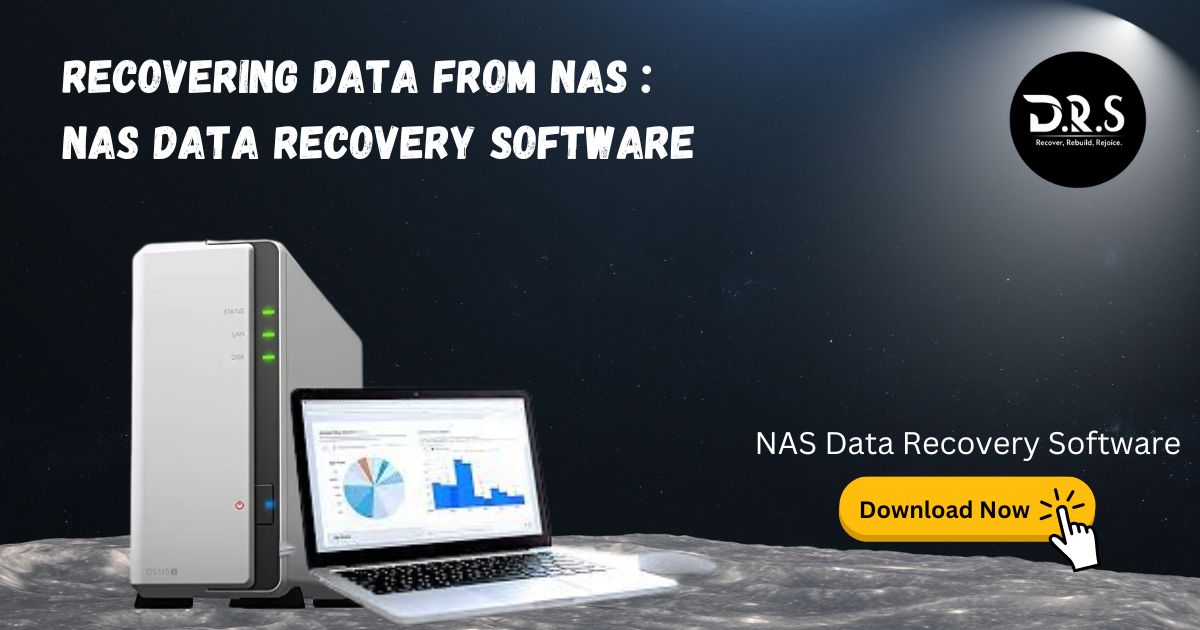From a RAID-primarily based network attached storage device, how may additional information be recovered? Data at the NAS hard drive may be recovered with the DRS NAS statistics restoration software program. Use our NAS facts recovery software program to without difficulty test and retrieve documents after turning off the NAS and disposing of the hard disk.
Network Storage is another name for Network Attached Storage, or NAS for short. NAS literally refers to a device that is connected to the network and has a data storage function. NAS stands for network-attached storage.
It consists of storage components (such disk arrays, CD/DVD drives, tape drives, or removable storage media) and embedded system software that can be used to share files across several platforms.
We’ll walk you through accessing and extracting data from your RAID-based NAS devices in this article, so you may format, reset, or reconfigure the RAID in your NAS setup.
Download NAS Data Recovery Software
You can attempt specialized data recovery software if you are unable to access data on the NAS, accidentally erase data on the NAS, format the NAS disk, or lose data as a result of a virus assault.
An excellent information restoration tool is DRS Data Recovery Wizard Pro, which offers a huge variety of file healing abilities, together with RAID recovery, QNAP recovery, formatted difficult drive recuperation, deleted document recovery, and extra.
These are some of the best features of the DRS NAS data recovery software.
NAS Disk Brands Supported: Thecus, QNAP, Synology, Lacie, Iodata, Buffalo, DLink, Seagate, Western Digital, and Synology NAS devices set up as a single drive, RAID 0, RAID 1, or RAID 5.
Compatible OS: Windows 7, 8, 10, 11, and Windows Server 2003, 2008, 2012, 2016, 2019, 32-bit or 64-bit
Documents in Word (DOC/DOCX), Excel (XLS/XLSX), PPT (PPT/PPTX), PDF, HTML/HTM, and other formats are supported file types.
Images: JPG/JPEG, TIFF/TIF, PNG, PSD, CRW, CR2, RAW, SWF, SVG, DNG, and so forth.
Video formats include AVI, MOV, MP4, M4V, 3GP, WMV, MKV, FLV, SWF, RM/RMVB, and MPEG.
Additional Files: Email, audio files, archives, and additional
Please spread the word about this material on social media to help others overcome this shared obstacle if you find it useful.
How to Retrieve Data Directly From NAS Server
Recovering Data from NAS devices may be restored without problems with the useful resource of DRS NAS information restoration software. To truly retrieve NAS statistics, adhere to the commands below.

Decide on a NAS server and begin your recovery.
On a 64-bit Windows 11/10 PC, download and install Data Recovery Software from DRS Tools. Select “NAS&Linux” and then “NAS Recovery” when this software opens. Click “Scan” after selecting your desired NAS device from the list of available servers that will instantly appear.
Turn on the NAS server’s SSH service.
The “Enable SSH service” option can be checked by going to “Control Panel > Terminal & SNMP”. Next, launch DRS Tools, keep in mind the remote access port, and click “Next”.
Establish a remote connection with the NAS server.
This program will automatically identify your IP address and port. Entering the username and password is all that is required. You can manually fix any incorrect IP addresses or ports. After that, select “Connect Now”.
Retrieve deleted or lost NAS data
Next, a NAS tool scan will begin when the DRS records recuperation program establishes a reference to your NAS. All of the deleted, lacking, and existent documents for your NAS server can be visible to you after the test.
To locate the deleted documents on the hard disk, you can use the “Filter” function or pick “Search documents or folders”. To shop the desired NAS files which you lost at the server, choose them and click “Recover” to store them someplace.
To recover erased network storage files, click the “Recover” button.
Tip: Data stored on cloud storage, external hard drives, and local disks can all be restored.
NAS Hard Drive Data Recovery: How to Do It Without Software
To put it simply, you take the disk out of the NAS, plug the hard drive into your computer, and then utilize data recovery software to save and extract files.
In order to retrieve data, you must:
Take the disk out of the NAS. Turn off the power and remove each disk individually.
Important
Label the disks you remove from the NAS in step with the bay they belong in. You can reassemble them the usage of those markers to ensure consistency. Furthermore, do now not void the assurance via getting rid of the NAS drives.
Attach the disk to your computer. You can utilize USB-to-SATA adapters in conjunction with power to connect the disk to your PC’s motherboard directly, or you can use SATA cables. You should not “Initialize disks” or “Format” the connected NAS devices when the disks appear on the PC.
Make sure you have enough space on an external or internal hard drive or another network storage device (equal to or more than the amount of data recovered from failed NAS disks) to store the NAS restored data.
Download DRS Data Recovery Wizard, a NAS recovery program.
Once these steps are complete, use a PC to access DRS file recovery software to retrieve data from Synology NAS or other NAS services.
How to Use Manual Services to Retrieve NAS Data
You can consult specialists if you are not skilled at controlling NAS/RAID drives. Following a diagnostic, data recovery services provide the following services. Make immediate use of the professionals’ assistance.
Additional Details Regarding NAS Data Recovery
If you want to know more about NAS data recovery, check out the articles below.
RAID and NAS
SAN VS NAS
A network area system (NAS) is made up of several parts, such as hardware (a hard disk box containing one or more hard drives, processors, and RAM) and software (an operating system that controls network communication and access).
RAID (Redundant Array of Independent drives) is typically used by NAS equipment with numerous hard drives to provide data redundancy.
You can connect two or more hard disks to the storage system to function as a single, very big, high-speed hard disk if RAID is enabled on the system.
Different forms of RAID are used by most NAS devices to provide data consistency and fault tolerance.
Proprietary RAID management systems, which may combine many hard disks into very complicated RAID systems, are offered by many NAS manufacturers to their clients.
See the linked page for solutions on how to recover RAID 5 data from a failed NAS.
The evolution of the conventional DAS (Data Acquisition Station) technology is Storage Area Networking, or SAN, which is appropriate for multiple data block access. The SAN switch, which acts as a data exchange channel, is the central component of SAN technology. High data consistency, minimal latency, extensive connectivity, remote help, and customizable management are some of its benefits.
A dedicated network file server, or NAS, is a system that keeps storage devices and servers apart and handles data centrally to free up bandwidth, enhance efficiency, and cut expenses. In comparison to employing server storage, it is far more effective and affordable.
NAS and SAN are not the same for applications. While NAS offers flexible personal and enterprise disk space services for office automation, advertising, education, taxation, and other uses, SAN is best suited for massive data block access. NAS is mostly used by companies that need a lot of data storage, such as financial securities, multimedia and image processing, email space registration, FTP servers, and others.
Common Situations of NAS Data Loss
The following factors could cause a data loss on a RAID-based NAS:
- Inadvertent formatting or deletion
- Unexpected power outages or inappropriate shutdowns
- Overheating of the server
- Malware or virus attack, OS failures, or other issues
- Malfunctioning hardware Controller
- Several disk failures
In conclusion
At the end, If you want to share access to files and media across several computers, phones, and tablets and your data volume surpasses the capacity of your desktop hard disk storage, Network Attached Storage (NAS) devices are a perfect alternative. Use expert NAS data recovery software, such as DRS Tools , to rapidly recover crucial data if you lose any while using the NAS.
FAQs about NAS Data Recovery
To assist yourself if you nevertheless have queries concerning NAS facts healing, test the quick responses supplied underneath:
1. Is data recovery possible from NAS?
It is possible to recover data from a NAS hard drive. For NAS hard drive data recovery, you can use CMD to modify your driver’s characteristics. Alternatively, you can get help from a reliable company. However, EaseUS Data Recovery Wizard Pro is the ideal choice because it doesn’t require you to remove the hard drive from your NAS server.
2. How can I get my NAS's lost files back?
Next, you need to apply the satisfactory NAS statistics recuperation software to test the other disks or RAID devices. Next, retrieve the lacking NAS records. Scan instances to your NAS tool are often lengthy.
3. How can a failed NAS be used to retrieve data?
If the Synology information healing strive is unsuccessful, you can import the configuration and shop the records thru transferring the disks to a new (identical or similar model). All of the drives are still operational, though.
4. What is meant by NAS recovery?
Network-connected garage statistics restoration, moreover called NAS information recuperation, is the technique of recovering and restoring information from a server, infrastructure, or community-attached garage tool. However, It allows records that have been deleted, corrupted, or rendered unreadable to be recovered from a community linked garage tool (NAS) or any of its storage additives.
Read More:

2 Responses